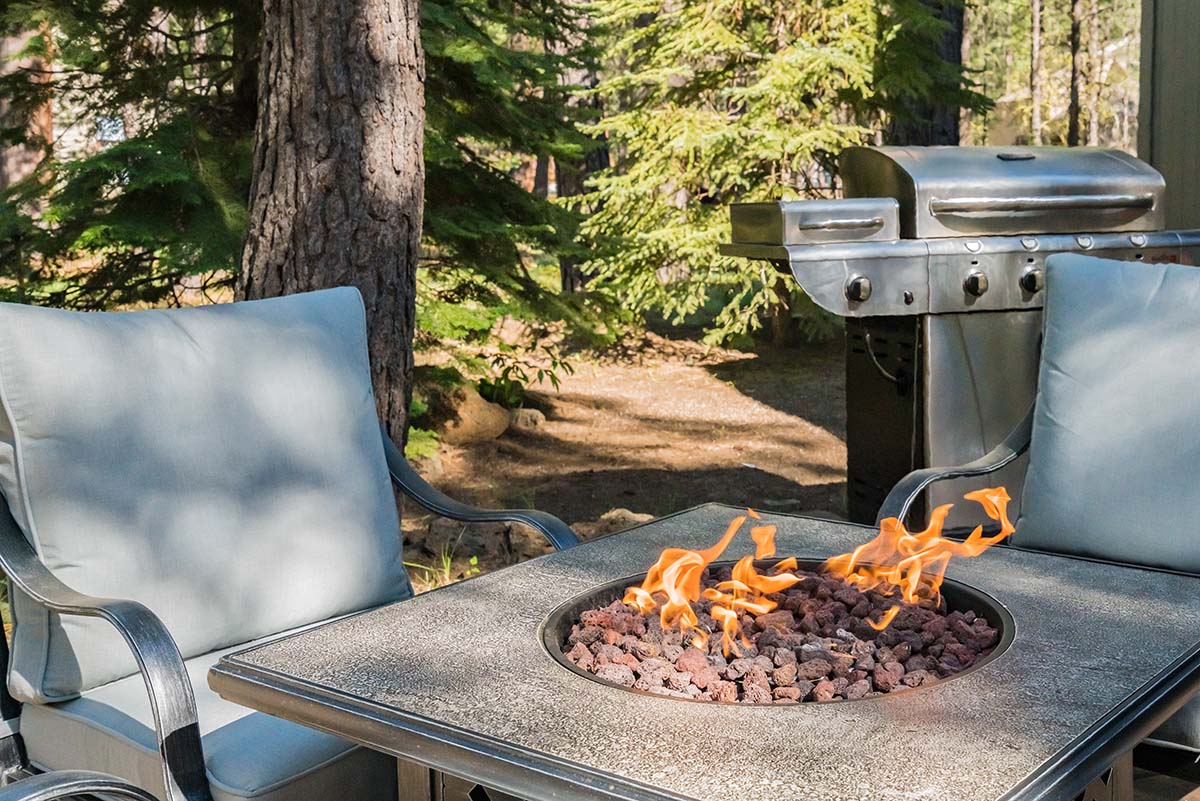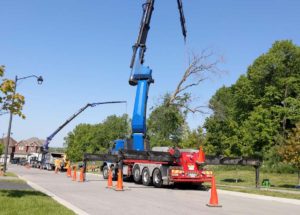Summer’s heat is what lets us enjoy the outdoors and go for a swim. However, that dry heat can be hazardous for Ontario’s trees without proper care. In 2023, Ontario saw 3 times as many wildfires as in previous years. As summers get warmer and progressively dryer, trees become more vulnerable to fire risks. The last thing you and Advanced Tree Care want is your beautiful trees in a blaze, so we’re giving you some summer tree care essentials for dry tree protection to minimize fire risks.
Keep Your Trees Watered Through the Summer
The main trees at risk of catching on fire are those that have become dry from the heat and lack of water. When dry trees are exposed to fire, extreme heat, or lightning in the summer, they have a much higher chance of igniting than a tree that has received the appropriate amount of water. Coniferous trees are especially at risk of fire. This is because the needles dry out faster than leaves. The needles also give the branches more surface area, meaning they burn much faster just like a log cut into smaller pieces. That doesn’t mean deciduous trees need any less protective care when dry. The parched needles, leaves, and branches can act as kindling, putting any tree at risk of fire.
This is why you need to keep your trees watered in the summer. Giving your tree enough water will keep it hydrated, prevent it from drying out, and protect it from most fire risks. If you notice needles browning or leaves changing color, water more thoroughly. Even under water restrictions during the summer, most communities will permit tree watering, so don’t let your trees go thirsty.
Prune Your Trees
Proper tree pruning is a simple but essential way to reduce fire risks and protect your tree in the summer heat. Prune any low-hanging branches, typically within 2 meters above the ground. These are more likely to be dry and closer to any ground-borne fires. Also, prune and remove any dead branches throughout the tree. These dry out and become fire risks for the rest of the tree if exposed to enough heat or a spark. Pruning is also beneficial for the tree’s general health, so care for your trees by getting pruning services from a certified arborist at least once a year.
Remove Debris to Protect Your Tree
Just as dead branches and leaves are a risk on the tree, they’re a fire risk on the ground underneath. Trees don’t only lose leaves and branches in the Fall. They fall all year long and gather underneath the tree. In summer’s dry heat, those leaves and small branches become a real fire risk. Be sure to remove them to protect your tree. Large piles of debris can also expose your trees to pests or other illnesses, so timely cleaning is part of basic tree care to protect them from more than just fire.
Keep Other Fire Risks Away
Along with those dead leaves and branches strewn about, keep away any other combustibles you store in the backyard. Firewood, scrap wood, wood chips, grass cuttings, etc. are all common, often ignored, yard piles and potential fire risks in your yard. For proper tree care and fire risk reduction, store these combustibles away from your trees as well as your home.
Keeping Fires the Right Distance From Your Dry Trees
When summers become dry, fire restrictions are usually put in place that prevent burning campfires and brush fires. Even if these haven’t been prohibited or you’re allowed to run a natural gas- or propane-fueled fire, keep any of those flames a safe distance from your trees. Burn fires or torches at least 10 to 20 feet away from any tree. Although the canopy might be high enough, don’t burn a fire under the dry branches and leaves for conscientious tree care. A fire’s heat travels upwards along with some sparks and embers. These can be enough to ignite the high-up, dry branches, and leaves.
Protective Tree Care Keeps Your Yard Cool
Following these essential tree care practices will reduce fire risks in your own yard during these hot and dry summers. Along with keeping them safe, proper watering, pruning, and yard management will also keep your yard shaded and cool to reduce other fire risks. If you’re looking for help caring for your trees to reduce fire risks or want additional advice managing your yard during these hot summers, be sure to contact us Advanced Tree Care.






